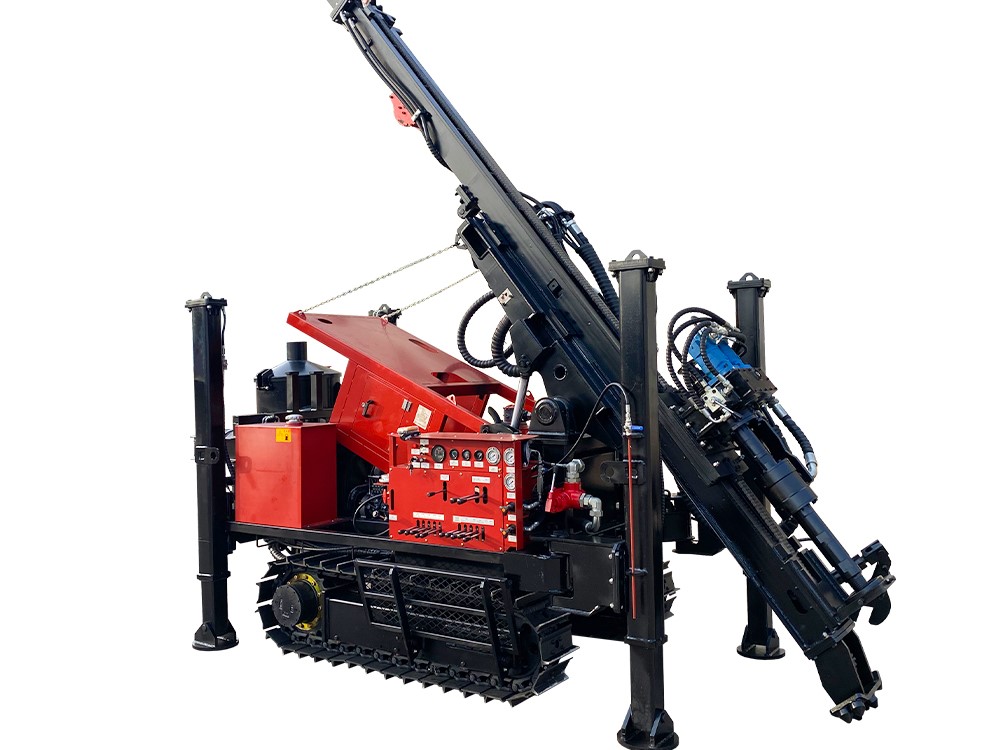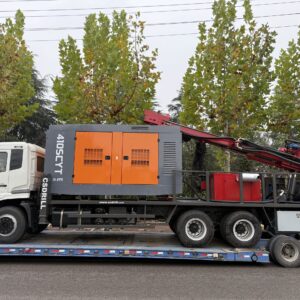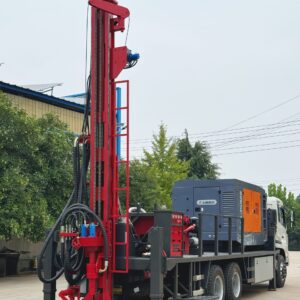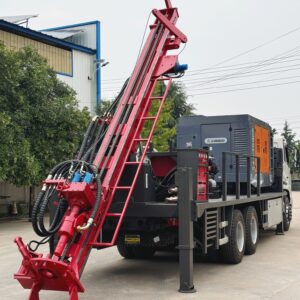Reverse Circulation drilling, or RC drilling, is a method of drilling which uses dual wall drill rods that consist of an outer drill rod with an inner tube. These hollow inner tubes allow the drill cuttings to be transported back to the surface in a continuous, steady flow.
Unlike diamond drilling, it compiles sample rock cuttings instead of rock core. The drilling mechanism is most often a pneumatic reciprocating piston called a hammer, which in turn is driving a tungsten-steel drill bit, specifically made to be able to crush hard rock.The hammer is used to remove rock samples which are pushed through the machine with compressed air. When air is blown down the annulus (ring-shaped structure) of the rod, the pressure shift creates a reverse circulation, bringing the cuttings up the inner tube. When the cuttings reach a deflector box at the top of the rig, the matter is moved through a hose attached to the top of the cyclone.
The drill cuttings will travel around the cyclone until they fall through the bottom opening into a sample bag. These bags are marked with the location and depth of the place where the sample was collected and can be transported directly to the assay lab for analysis.





